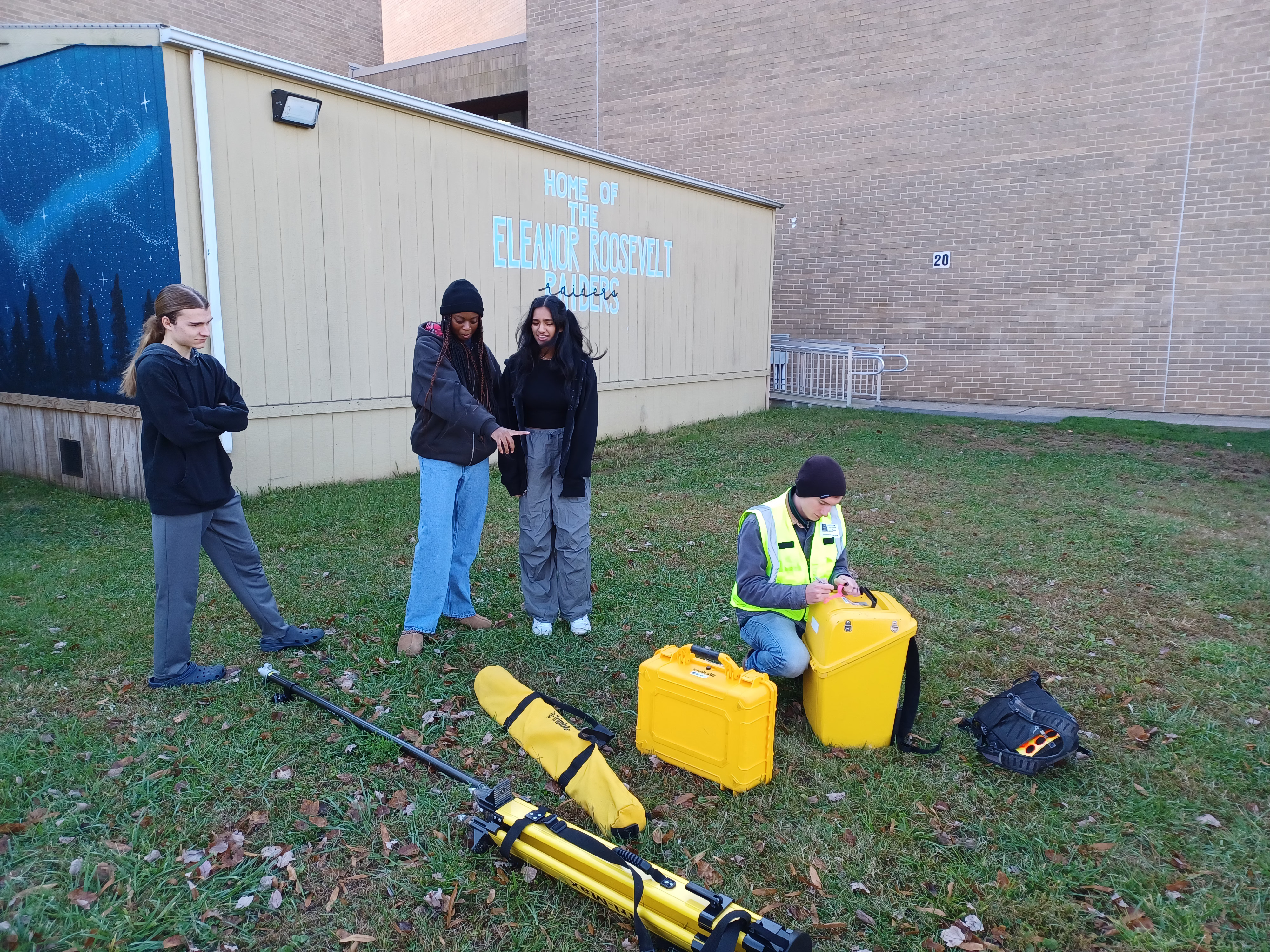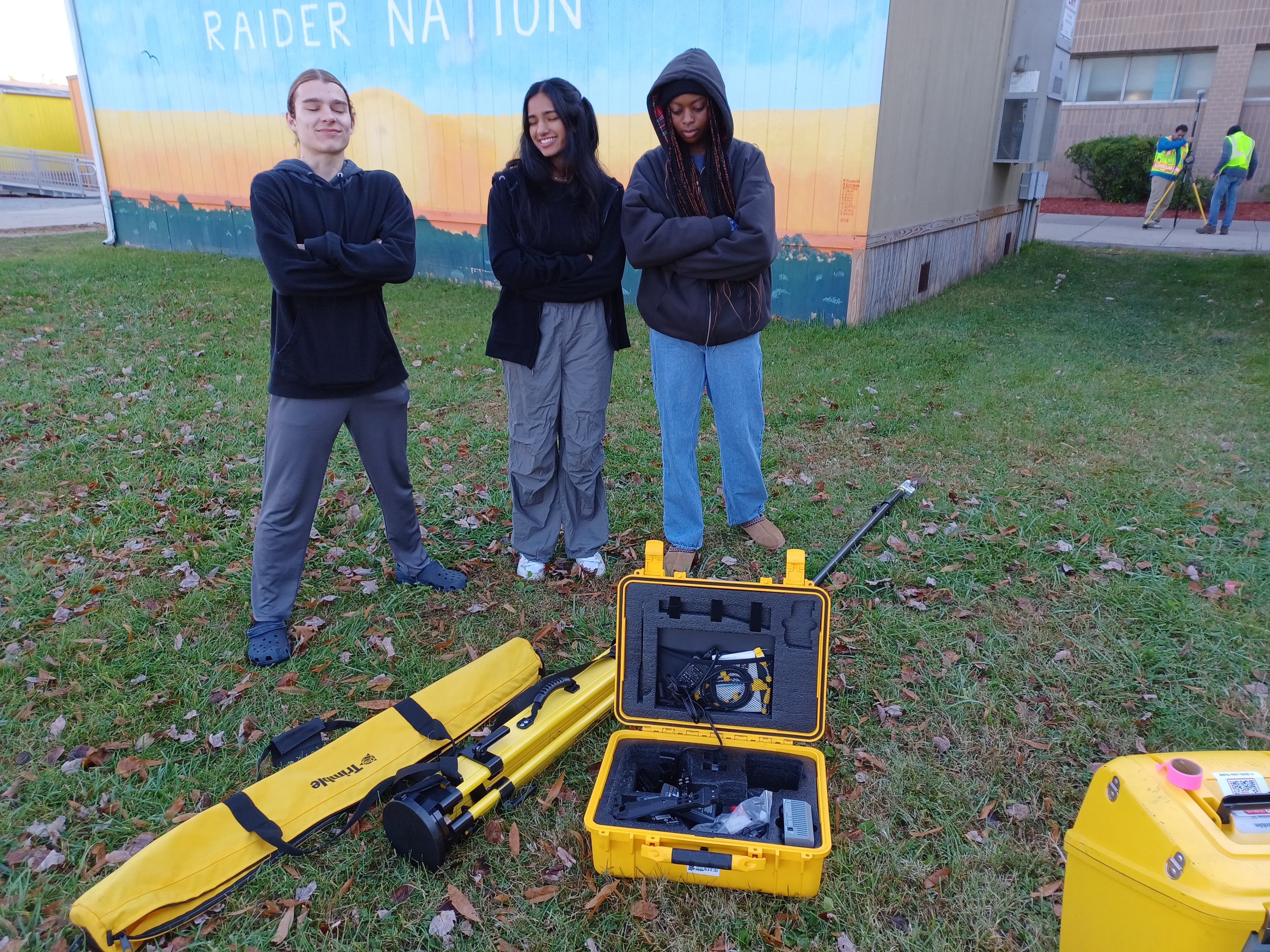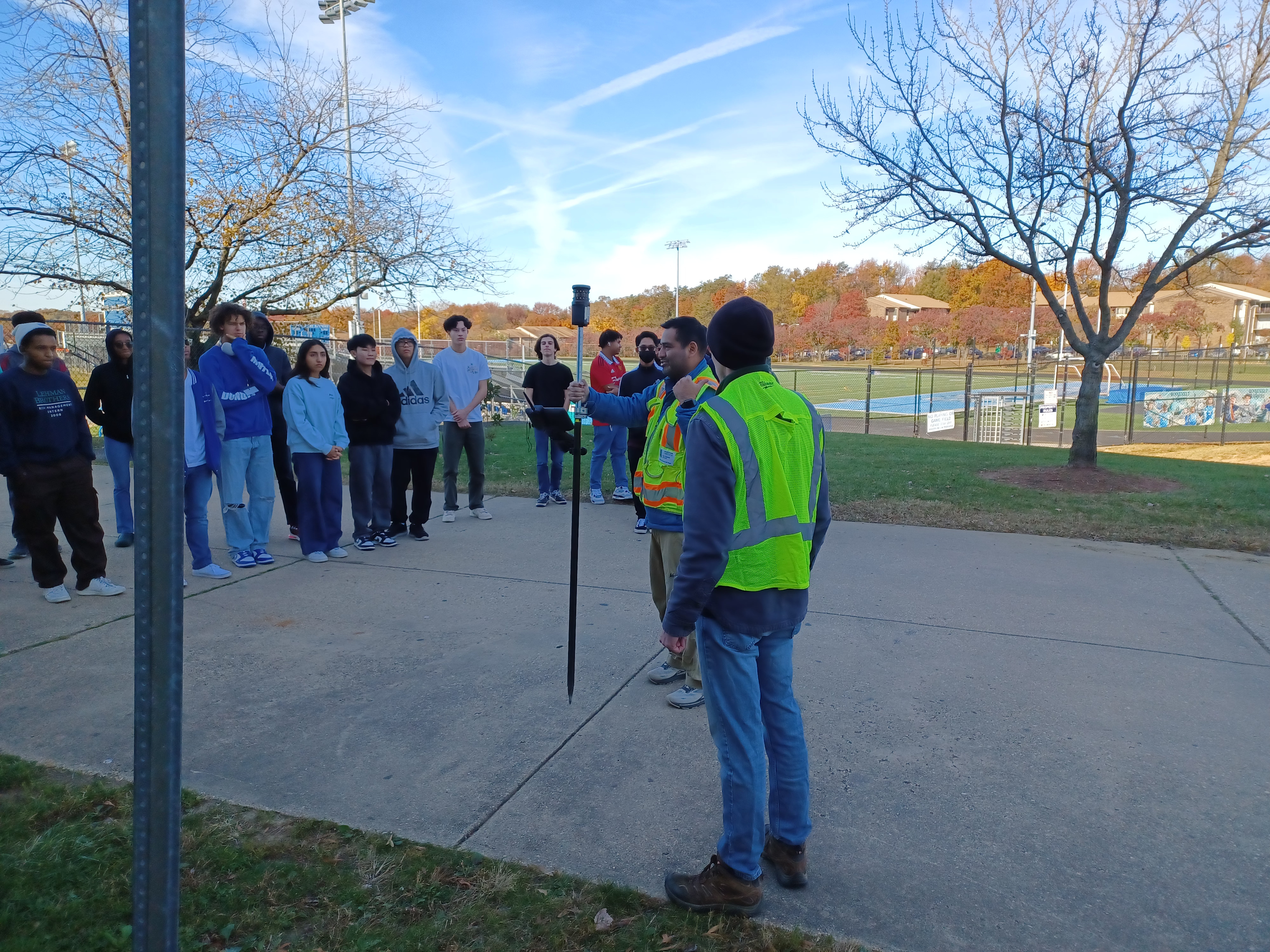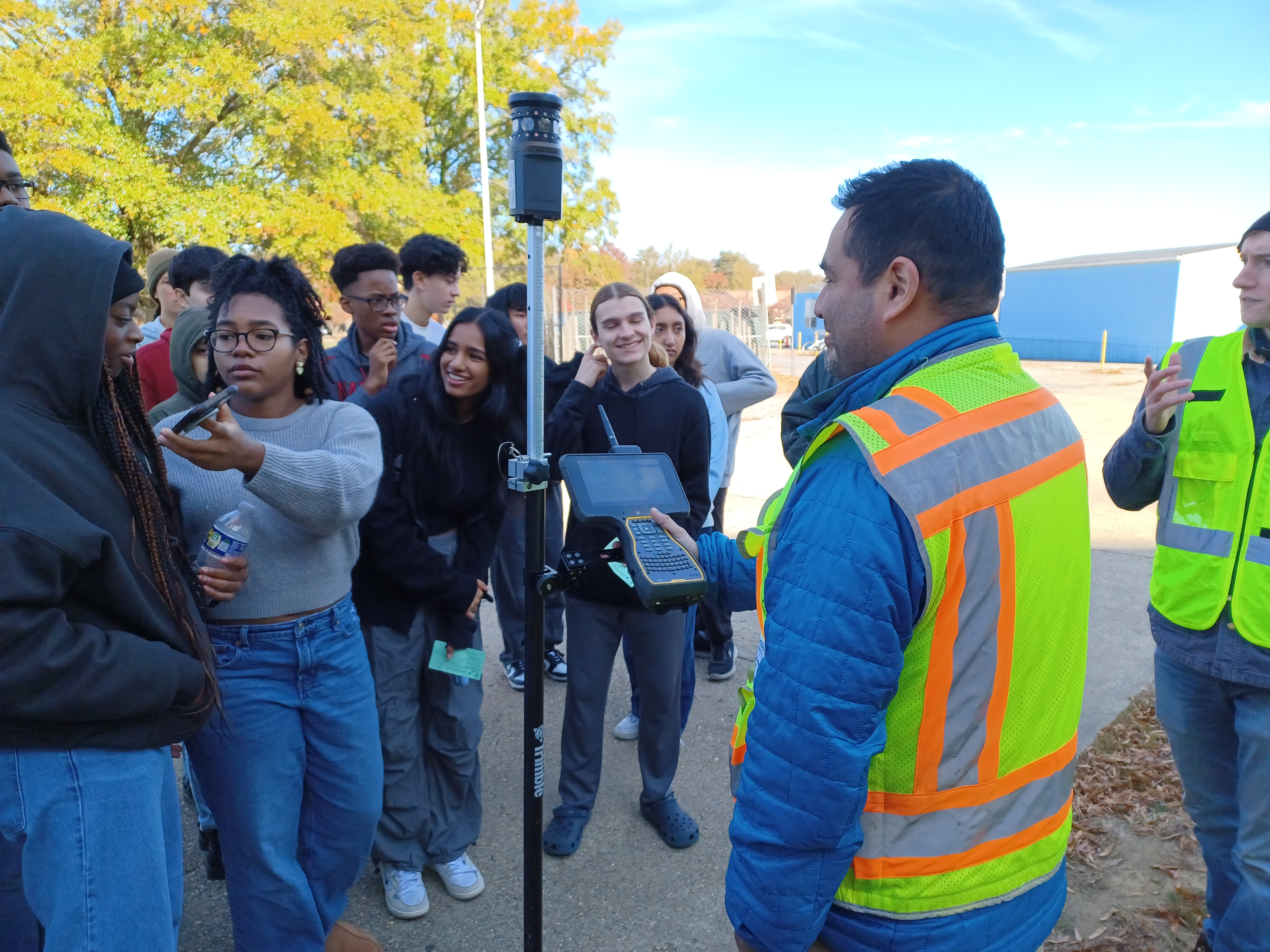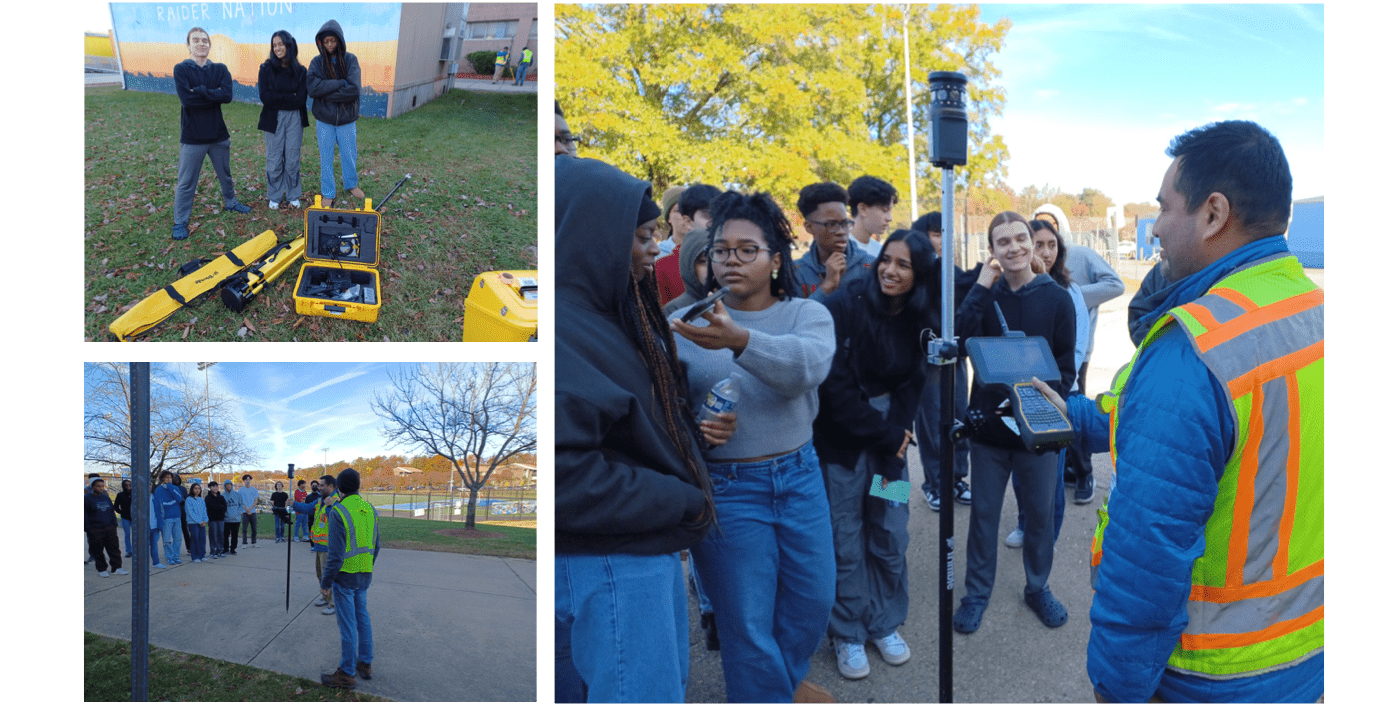
At Eleanor Roosevelt High School in Prince George’s County, four students saw a cracked sidewalk and decided to make it their focus for an end-of-year e4usa project. What started as a simple idea to just “pave it over” quickly became something much more meaningful, thanks to the guidance of their teacher, Dave Eisenberg, and a team of community partners.
“It was near the end of the year, and initially the students wanted to put forth a minimum effort in defining the problem and developing a solution,” Eisenberg shared. “I told them that they needed to modify their problem statement and dig a lot deeper into why the sidewalk was cracking and then come up with a better solution.”
That push sparked curiosity. The students realized the issue wasn’t just cosmetic; it was a symptom of a larger problem involving weathering and erosion. Once they reframed their thinking, they became fully engaged in developing a sustainable fix. Their project evolved into a thoughtful exploration of landscape drainage solutions. With a clear plan in hand, they pitched their idea to a staff member from the Schmidt Center, the county’s outdoor education hub.
The students were then invited to present their project to the school’s vice principal, who enthusiastically supported it. They also pitched it to the building supervisor, who gave them the green light to move forward.
Even after the school year ended, the students stayed involved. Eisenberg had worked closely with the William S. Schmidt Outdoor Education Center in his role as ERHS’s Green School Coordinator, and that connection opened new doors. The Schmidt Center helped connect them to the Anacostia Watershed Society, and from there, the project found a second life. ERHS was invited to participate in the Prince George’s County Treating and Teaching program. The program supports teachers in using school grounds for hands-on learning about the environment and includes the installation of green infrastructure like rain gardens and outdoor classrooms.
The students’ project led to something that will outlast their time at the school. A professional landscape designer surveyed the area, and ERHS was awarded a new outdoor classroom. Though delays meant construction didn’t happen before graduation, the impact of their work was already clear.
“They graduated thinking their project had died on the vine,” Eisenberg said. “But in reality, they had planted the seeds of a legacy. Their work lives on in the form of an outdoor classroom and deeper environmental awareness at our school.”
Real Problems. Real Skills. Real Impact.
This is what e4usa is all about. The course gives students the chance to identify real problems in their communities and work toward solutions that matter. In doing so, students develop the skills they’ll need in college and in the workforce, including systems thinking, communication, collaboration, persistence, and confidence in their own ideas.
In this case, a group of students didn’t just learn about engineering. They became changemakers. They engaged with professionals, presented to school leaders, and helped bring a lasting improvement to their campus.
That’s the power of e4usa. One project, one problem, one idea leading to something students can point to and say, “We did that.”
